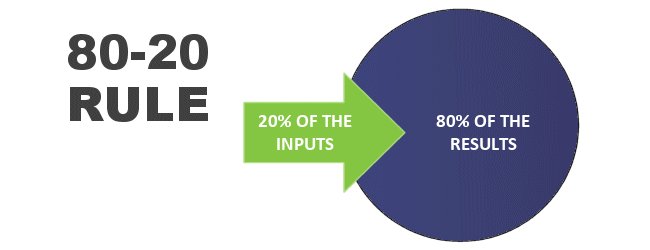
Ever hear of the 80/20 rule? In a nutshell, it states that 80% of the results come from 20% of the effort.
I’ll save the explanation and case studies for Wikipedia – check it out if you’re at all skeptical. Here are some commonly cited 80/20 examples:
- “80% of your sales come from 20% of your customers.”
- “80% of the world’s wealth is controlled by 20% of the people.”
- “80% of the land in Italy is owned by 20% of the population.”
- “80% of your sales are made by 20% of your sales staff.”
AND
“80% of your advertising results are generated by 20% of your advertising.”
In other words, just 20% of all the advertising you buy is generating the bulk of your advertising results.
I’ll let that sink in for a minute…
—
—
Now, the priority is to pinpoint the 20%, so you can do more of it, and less of everything else.
When creating a marketing plan of action with my clients I always, always stress the importance of measuring and tracking results. With some types of *advertising* it can be downright tricky, so I focus efforts in the places where we can measure ROI.
Which means more ‘creative marketing’, and less ‘traditional advertising’.
Once you have at least a snap shot of what’s what, you can start noting patterns.
It helps to create categories. If your company invests in a lot of traditional advertising your categories might look like this:
- Ads with ‘XYZ Publishing”
- Ads on “ABC Radio”
- Trade Show A
- Weekly ad in “Acme Newspaper”
Then … If you notice that a $5000 investment with XYZ Publishing gave you a return of 40 sales at $200 each (net), and a $5000 investment with ABC Radio gave you a return of zero sales, you can double your results by taking the $5000 out of ABC Radio and putting it into XYZ Publishing.
We conduct similar reviews within Big Fish Media. If it’s not working, we take all or part of the investment (ex. time, money) and redirect it to something that performs better, or something new.
You know what they say…if you want different results you have to change what you’re doing.














Comments are closed.